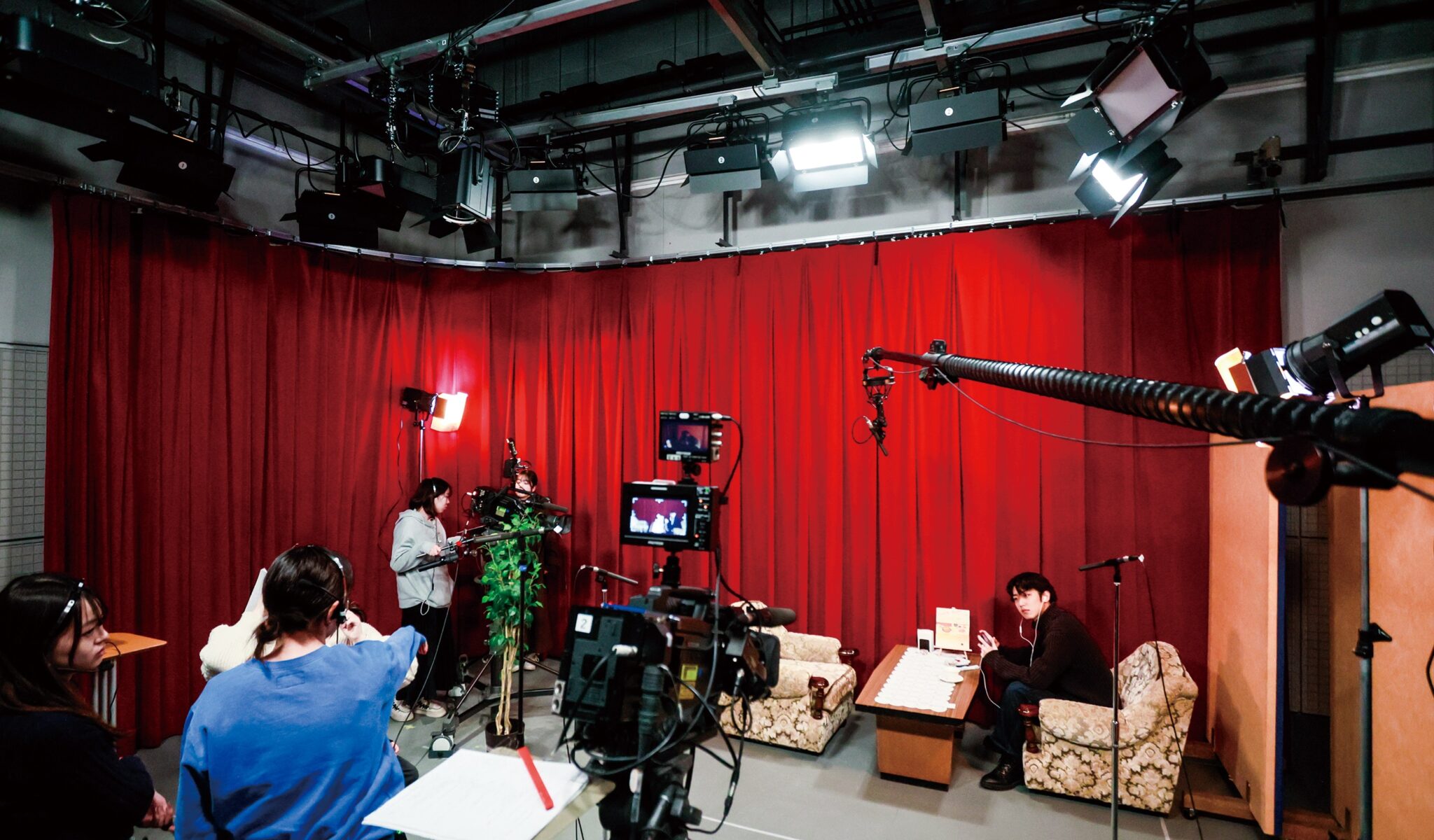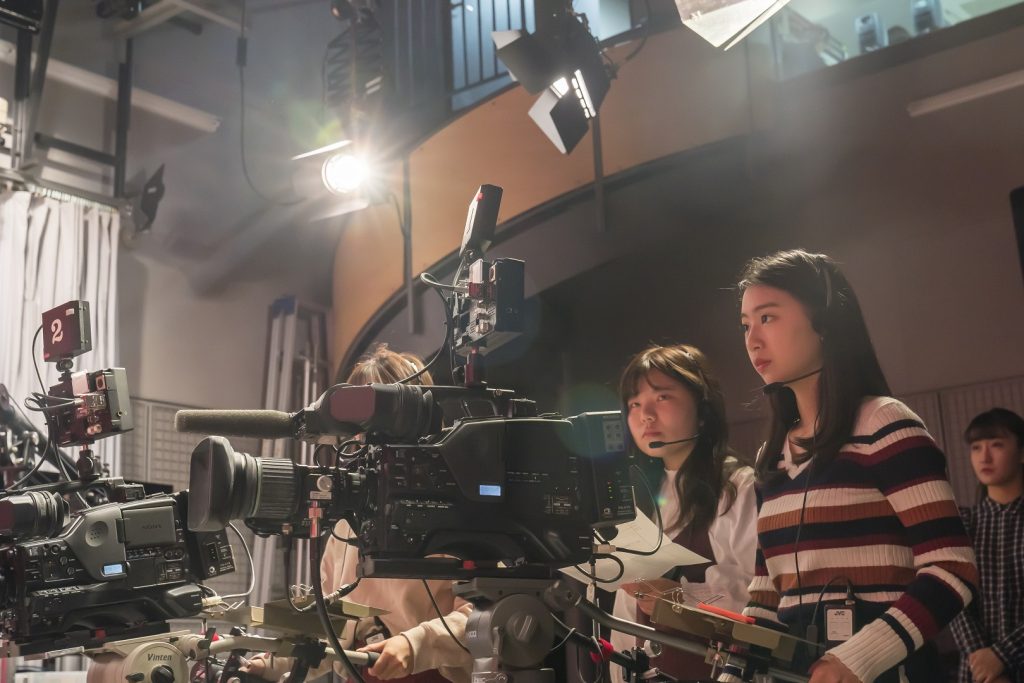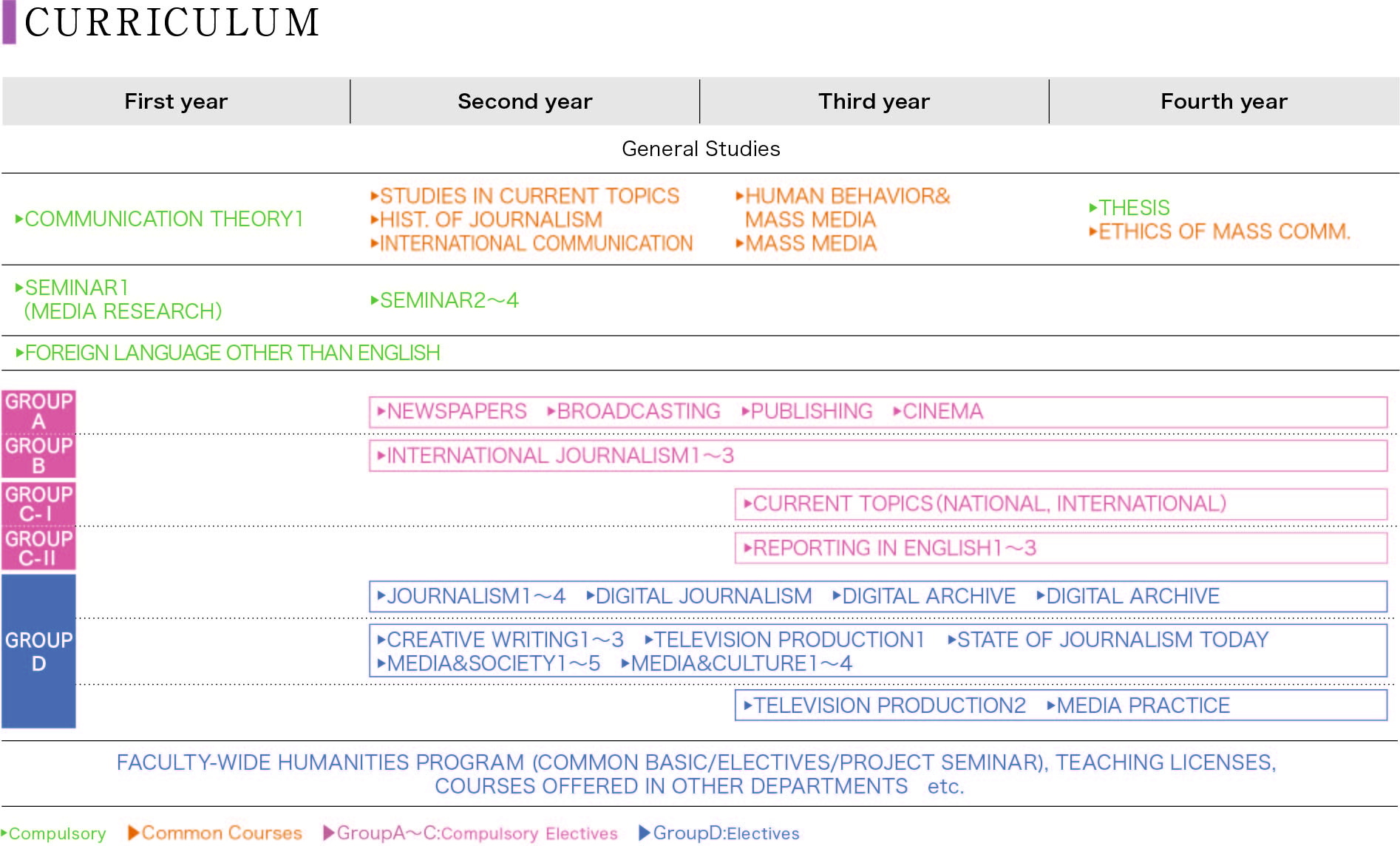Department of Journalism


Department Features
This course will focus on media communication in general, including newspapers, broadcasting, publishing, film, advertising, and the Internet, and will consider what role they play in society, how they function, and what impact they have on society. In an increasingly sophisticated media society, students will study journalism, communication, media, and information from both theoretical and practical perspectives in a broad and well-balanced manner.
In addition to training individuals who wish to enter the world of media, we practice communication education necessary for general business and working adults. Our emphasis is not only on training those who will go on to the world of journalism but also on training business people and working adults with advanced communication skills and media literacy.
The Department of Journalism offers a degree program with the SPSF (Sophia Program for Sustainable Futures) and instruction in English.
Learn about “images” in the digital age at the TV Center

As we enter an era in which everyone is connected through digital media, the importance of communicating through “images” is only increasing, not only in television and movies, but also in newspapers, publications, the Internet, advertising, entertainment, and all other industries. In the Department of Journalism, the TV Center offers a compulsory first-year course in which students work in groups to create a “one-minute television program,” and in the second and subsequent years, students continue to learn the basics of visual expression through the “Television Production I” and “Television Production II” curriculums.
Japan’s oldest journalism department
The Department of Journalism was established in 1932 as the first department in Japan to study journalism. At that time, Japan was in the midst of a period of heightened military tension and warfare but the Department of Journalism Studies continued to develop and continued to the postwar period without interruption and produced many journalists and media professionals. Campus Building No. 1 was constructed in the same year as the establishment of the Department of Newspaper Studies and has remained associated with the department throughout the university’s history.
Curriculum
In the first year, students acquire basic communication theory and engage in basic material research, TV program production, and media literacy courses. From the second year onward, students study journalism, mass media history and theory, and international communication theory in required courses. From the second year onward, students take required courses in journalism, mass media history and theory, international communication theory, etc. Of the four subject groups A-D, students study newspapers, broadcasting, and publishing, foreign journalism, and current affairs research in Groups A-C, and deepen their specialized knowledge with more practical studies in Group D.
In the second year, students are divided into three courses: Journalism, Media and Communication, and Information Society and Culture. Small-group seminars are another unique feature of the Department of Journalism, where students quickly acquire a critical view of facts and research skills.
as of 2022
* Please refer to the syllabus for more information on the courses.
Course Examples
- International Communication
The impact of globalization and the development of media and communication technologies on nations and between nations will be discussed in light of historical aspects and regional characteristics such as non-Western Europe, and contemporary issues will also be covered.
- Studies in Current Topics
Each group conducts research on a familiar current issue and presents the results using a variety of media. This is an interactive class in which other participants evaluate and criticize the presenter’s “reporting” as the “audience.”
- Media & Culture III
Students will learn about the theory and procedures behind opinion polls and other surveys conducted by the media. Students will also learn about the issues involved in conducting surveys and the problems that arise when reporting survey results, including the history of such surveys in the past.
- History of Journalism
This course examines the formation of media environments directly related to the “here and now” as a political and cultural history of urban civilization, technologies of transportation and reproduction, and mass society. Students will gain a historical understanding of the development of public opinion and public opinion that forms social consensus.
- Human Behavior & Mass Media
Using concrete examples and empirical data, we will consider what problems the “informatization” of modern society poses for our information environment and communication.
- Media & Society II
This course will consider what the press (journalism) is. Students will deepen their understanding of the “truth” of journalism and the “principles” of journalism that transcend differences in media by learning about activities conducted in actual newsrooms.
Available Teaching Licenses and Subjects
- First Category Teaching license for High School (Civics)
Educational Objectives and Policies
-
To study the social roles, functions and influences of all aspects of journalism and media communication, and investigate a broad range of problems in news reporting and media
-
To produce graduates well-versed in the types of communication required of a fully-fledged member of society, with advanced communicative skills and media literacy
-
The Department of Journalism sets standards for the skills and knowledge students should acquire before graduation as follows. Those who fulfill the graduation requirements shall be deemed to have acquired these qualities and will be awarded a diploma.
- Accumulation of academic knowledge of the various disciplines of journalism, media communications, information, etc. and the practical skills to engage in research, analysis, critical thinking, structuring and presentation based on such knowledge.
- The ability to learn from both dimensions of “theory and practice and to be a leading player in journalism or other fields that deal with media communications and information
- High-level communication skills and media literacy to live the informatizing modern world
-
In accordance with the Diploma Policy, the Department of Journalism constructs its curriculum with courses aligned to the following purposes:
- To have students study the fields of journalism, media communication and information taking a theoretical approach, media-specific approach, international approach, and realistic problem analysis approach
- To achieve a “broad education that is biased to neither theory nor practice” by balancing the abovementioned curriculum with a practical approach aimed at improving such expressive skills, verification skills and critical skills
- To nurture critical perspectives, research and analytical skills, and ethics in small-group education, by enrolling all students in individual seminars taught by full-time faculty members
- To require students to compile a thesis under the individual guidance of a full-time faculty member as a culmination of the knowledge, analytical skills and other skills acquired during the four years of enrollment
-
The Department of Journalism welcomes students with the qualities described below:
- Students proactively interested in the disciplines of journalism and media communications in the information-oriented modern world and motivated to study and contemplate the disciplines in depth
- Students with an inquisitive attitude towards issues challenging modern society as well as the logical thought and judgment required to critically verify such issues
- Students with the competence to present the survey and research outcomes based on their own interests and the articulateness to explain them
Faculty Members
Ruri ABE Professor

Naoharu TAKAHASHI Associate Professor
Arun Prakash D SOUZA Assistant Professor
